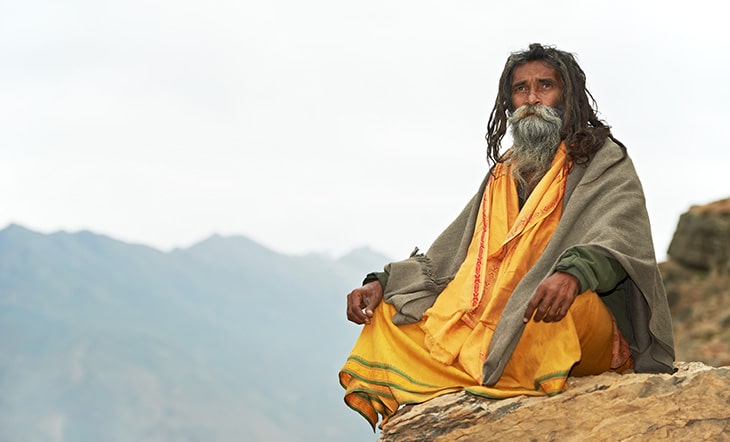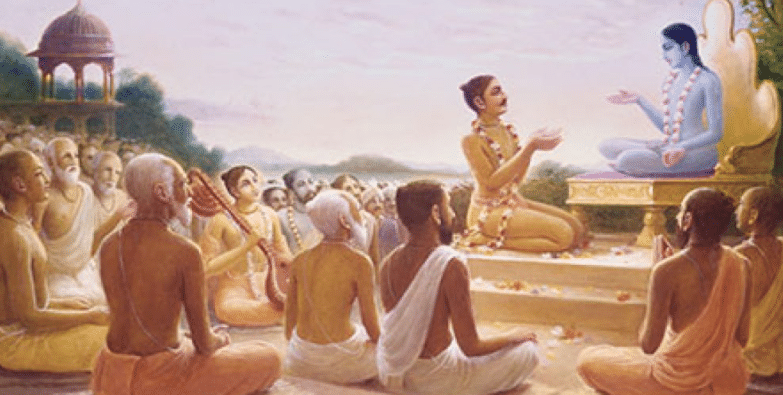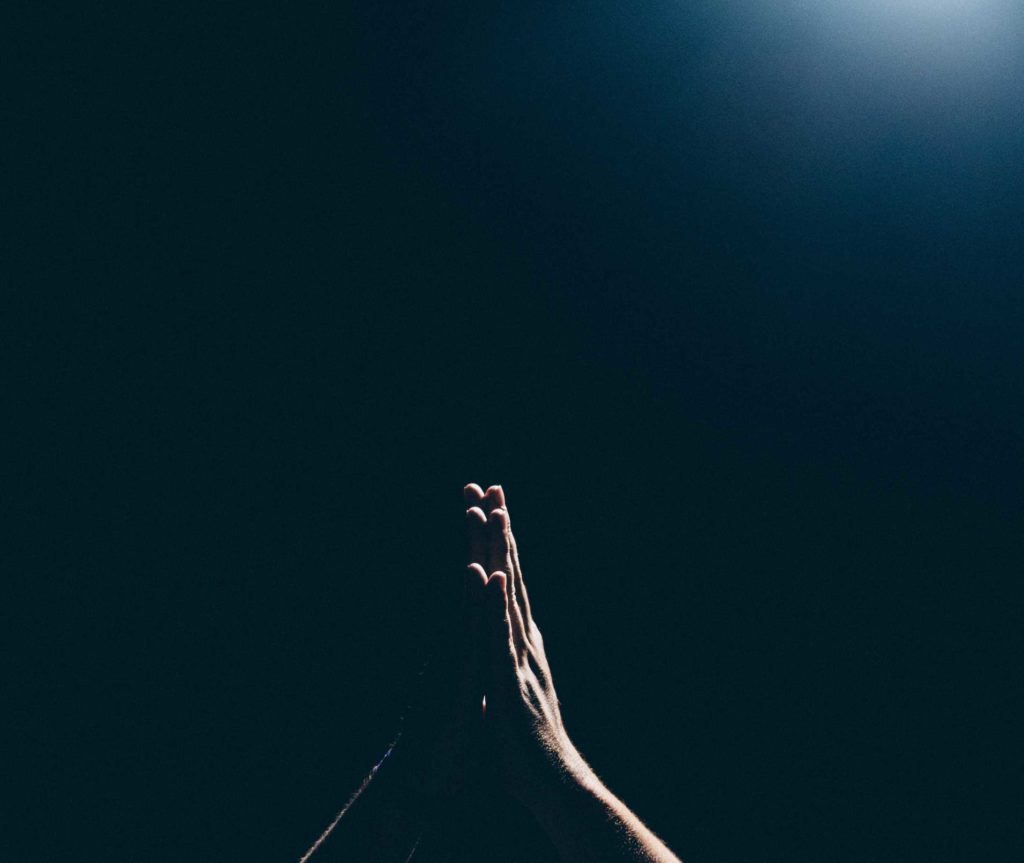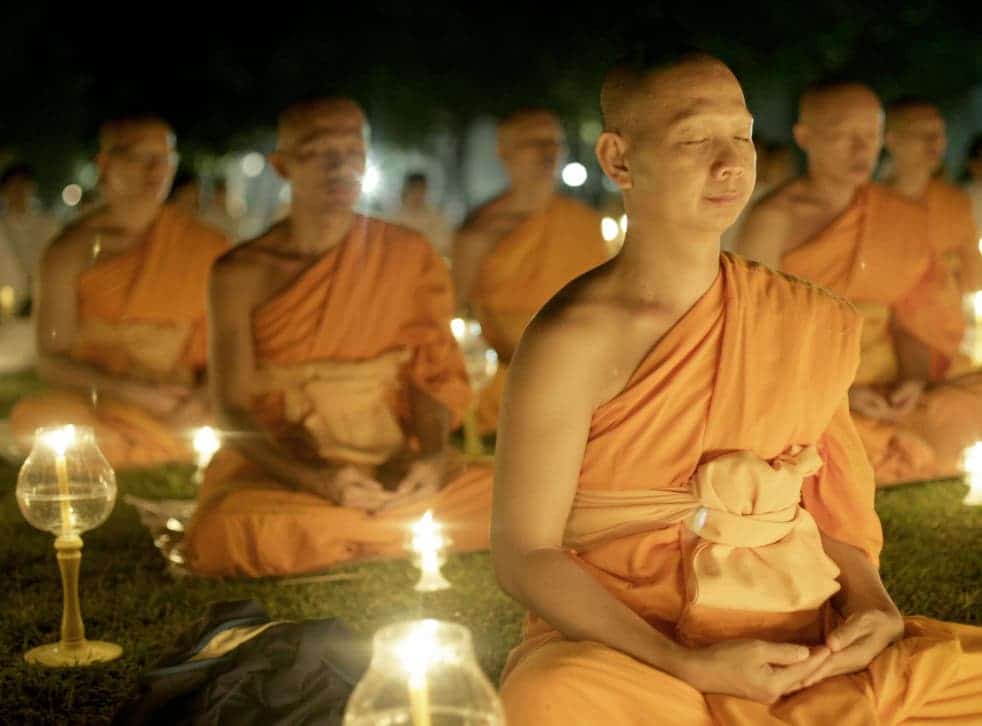Yoga has been in our lives for decades as an alternative spiritual discipline that helps us connect with our emotions, escape from the chaos outside and better relate to our bodies. However, how many of us really know where exactly yoga comes from? Could it be considered as just another religion? Is yoga an ancient creed that seeks to connect us with our emotions through moderate physical exercise?
The answers to these questions no one has been able to give them clearly, because the origin of this art is as obtuse as distant, but there are several answers formulated by experts that can serve as a guide to help us make a clearer idea of what yoga is, its relationship with the major religions of the world and where it comes from. And that is precisely what we will try to explain throughout this article, the origins of yoga and reveal currently recurring questions such as: Is yoga a religion?
If you want to know more about the roots of yoga and its evolution until today through a deep analysis of its relationship with Hinduism, Christianity and Buddhism, read on and maybe together we will discover it.
Can you come to consider yoga as a religion in its own right?
We’ll tell you all about it below!
Table of Contents
The origins of yoga: the possible beginnings of an ancient discipline
If there is one thing that is clear to everyone, it is that absolutely no one knows exactly when yoga began.

Of course, there are many indications of the moment in which possibly some sports disciplines with postures very similar to those of yoga began to be practiced, although of much greater hardness and with a different purpose than the one currently attributed to them. But in any case there is no exact date and place of the origin of this wonderful discipline that millions of people in the world used and practice as a way of life every day.
Most experts date the beginning of this practice in the year 3000 or 4000 B.C. approximately, and they do it thanks to the discovery of large stone figures in the Indus Valley (located in India) that were carved emulating postures very similar to those that yogis do nowadays. However, there are many who disagree that the beginning of yoga took place at that time in history and claim that the first teachings of this art were given more than 5000 years ago completely orally.
However, there are also those who believe that the first and only notions of yoga are those contained in the so-called “Vedic scriptures” and that it was the great sages of the time (Maharishis) who began to transmit them to their disciple’s generation after generation. Who is really right and who is only stipulating through scarce evidence and that has been really complicated to interpret after years of study? No one knows and we may never know exactly.
Is yoga a religion?
Once explained briefly but concisely the possible beginning of yoga, which as you have seen leaves more doubts than certainties, the next big question that we will try to answer is: is yoga a religion in itself?
And the answer is clearly, no.
Although millions of people declare themselves every day as faithful followers of this discipline and preach with its values as if it were a true creed, the reality is that yoga can not be classified as a full-fledged religion for several reasons. While it is true that there are many similarities with the main religions of the world that could lead to confusion, such as the constant search for well-being through inner peace, the satisfaction and state of calm caused by its practice and the main idea of personal contemplation as a way of life.
However, although all these practices are similar to those carried out by believers and have very similar effects on a spiritual level, yoga does not have a set of rituals or obligations that the believer must follow to reach the state of the inner connection between him and his god. Neither does it have a specific book where you can read all its teachings and preach with them to convert other people to that creed, and it does not even have a God of its own to worship.
Therefore, the correct thing will always be to consider yoga as a spiritual and philosophical practice with which people try to reach a state of peace and inner fullness, but in no case it can be considered a creed formally with which to preach to the world (although many believe it and speak of it as such). Yoga has a very solid philosophical basis, but not a religious one. They are concepts that can easily be confused, but in this case, they cannot coexist under the definition of the same name.
What is the relationship between yoga and religion?
Perhaps this second question may seem contradictory once you have read the previous point: if yoga can not be considered in any case a religion, how can you get to relate it with any? Well, the truth is that although yoga itself does not meet the basic requirements to become a religion, its origin and some of its most common practices have a very ancient religious basis.

The first yogis of which there are data had little knowledge about the different religions that existed in the world and in Asia the predominant creeds when yoga was developed were Hinduism and Buddhism, which is why some of their rituals and ideas have been included indirectly and involuntarily in yoga and its most sacred ideals. After all, if a Christian had created a discipline that tries to mix his philosophical ideals with physical exercise, surely he would also end upbringing to that discipline values proper to Christianity because it is his only religion and he preaches with it in everything he does.
To better understand this relationship between yoga and religion we will show you an example. In Hindu and Buddhist religions the sacred mantra “Om” is chanted while meditating, whose sound symbolizes the harmony of the universe and chanting it while meditating will help us find our inner peace and better understand our place in the world. Is the person who meditates and pronounces this mantra a Buddhist or Hindu? No, he or she can be Buddhist or Hindu or be totally agnostic and will still be practicing a philosophical discipline, not a religion.
A yogi of the 21st century will be using a sacred ritual proper to Buddhism when practicing yoga, but this does not make him or her religious, because the main purpose of this practice is the contemplation of oneself and finding peace with the universe. However, not being a believer of any religion will not prevent yoga and its roots from being eternally linked to millenary religions whose mantras have meanings that transcend the love for any God.
The difference between religion and spirituality
Having made it clear that yoga and religion are different concepts, the next question we will try to answer is: how does spirituality differ from religion?

Dr. Larry Dossey, an advocate of spirituality in healthcare, explains that the concept of spirituality is enormous and that each person will have his or her own definition of this term, since what may be sacred to one person may mean nothing to others. Spirituality is an immense feeling of connection with the universe that each person can feel in their own way, so there is no single way to define it, or to feel it.
Religion, on the other hand, is an organized system of beliefs and rituals that revolve around a faith and a divine figure that followers consider to be their only “God”. Therefore, anyone who wants to be part of this creed must follow clear instructions and can only have a predetermined set of ideas and beliefs; if he or she deviates from these rules, he or she will not be a believer and therefore, can no longer be part of that religious community. Since yoga does not belong to any organized system of beliefs or rituals, it cannot be considered a religion but as a discipline that promotes and extols the value of spirituality.
The translation of the word “yoga” is unity, something that has much to do with its main objective for the people who practice it in their daily lives: to improve the connection between the mind and the spirit and help people to enhance their spirituality while learning to relate to their environment and their emotions. Therefore, yoga is a discipline that delves into the depths of each person’s spirituality while teaching them a new form of faith: love for the universe and oneself.
Yoga and Hinduism
As we have been explaining throughout the article, the origin of yoga is closely related to the main religions of humanity, here we will explain the relationship between yoga and Hinduism. The most important millenary religion of the Indian community.
The relationship between yoga and Hinduism goes back thousands of years and trying to explain all the details that this union entails would be endless, so we will simplify it for you to understand it quickly. The first evidence of the practice of yoga in Hinduism can be found in the Upanishads, sacred texts with more than 200 scriptures that narrate different meditation techniques with which man tries to know himself better and connect with the universe.
These scriptures narrate one of the most elementary principles of yoga: our union with the universe, being part of a larger whole that surpasses our individuality and makes everything material transcendent. This is the basis that Hinduism brought to yoga: to be one being, to be part of a community in which everything must be shared in order to be enjoyed.
For Hindus practicing yoga was their way of shedding all the superficial layers of their being, a sacred ritual in which they tried to turn off the noise of their mind and focus on what really matters: their spirit. Something that we have continued to preserve for millennia and that we continue to seek every time we sit at our mat doing the sun salutation.
Yoga and Buddhism

The relationship between yoga and Buddhism is quite similar to that of Hinduism, with the difference that the most important figure of this religion and the main promoter of yoga through it was the famous yogi: Buddha. He firmly believed that the main mission of yoga was to make us rest from the routine, practice mindfulness and forget for a few minutes of everything that happened to us out of that state of trance and peace of mind.
The most important texts that relate yoga to Buddhism are those of the Yoga Sutra of Patanjali, an ancient sacred text that narrates the application of yoga in our real life.
Yoga and Christianity
It is well known that the relationship that European Christians have with religion and all its forms is quite complex, which is why some people previously rejected the practice of yoga, seeing it as a purely spiritual practice proper to believers of Hinduism. Fortunately, this idea has been evolving and all Christians who practice yoga do so regardless of their religious roots, focusing on its benefits to unite the power of body and mind to maximize their personal well-being.
Is yoga a religion or a new form of philosophy?
We have made it clear throughout the article that yoga can not be considered a religion despite its close relationship with many of them, however now there is another doubt that has made the community of science and philosophy wonder the true role of yoga in humanity today: is yoga a new form of philosophy and can be considered as a science?
Of course, the answer to this question is subjective and will depend on the ideologies that each person has, however it seems that already begins to prevail the idea that yoga if it could be considered as such, both by the strength of their ideas and the results it has proven to have. The main philosophy through which yoga moves is the one that says that life is something more than a body and that uniting mind and body is the only way to reach the absolute truth that will bring us peace.
Is this not a strong enough philosophy not to consider it as a science worthy of study for the benefit of all people and their mental and physical development? Of course it is.
Is Bhakti Yoga religious?
The Sanskrit word “bhakti” comes from the word bhaj, which means “to worship God”. Bhakti yoga is about a personal relationship with God that focuses on love and devotion to a divine figure, which can lead to the confusion of believing that it is a religion that uses the practice of yoga in its rituals, but it is not.
As with other yoga disciplines, the main mission of Bhakti is self-realization and the constant search for peace through meditation and unity of body and mind, something that is increasingly predominant in all its followers who prefer to focus on looking inward instead of worshipping a Deity.
Spiritual Meaning of Yoga Poses
Yoga is famous for the infinity of postures it has to strengthen our physical and mental health. However, beyond knowing the technique of each of these postures and their benefits, we also believe it is important to get to know the spiritual meaning of each one of them. Below we explain the hidden meaning of five asanas so you have where to start with your workouts:
1.Mountain Pose (Tadasana)

Symbolically, Tadasana is the mountain pose, which represents a standing man and the specificity of the human being. The verticalization of the human changes his relationship with the world, freeing his hands and allowing another approach or another perspective to understand what surrounds him. The human then leaves an immediate perception of the world and adopts new concerns in search of more knowledge.
2.Tree pose (Vrksasana)

This is one of the simplest balancing asanas, and therefore one of the first to be learned in a yoga class. As its name indicates, when we practice Vrksasana, we symbolically evoke the image of a tree: the foot that serves as support firmly sinks our roots into the ground, turning the supporting leg into the trunk. The body rises upward, like the branches seeking sunlight. The firmness with which we plant the foot in the earth is critical. After all, the deeper the roots, the higher the branches will grow.
3.Eagle posture (Garuda)

The Sanskrit name comes from Garuda, the mythical king of birds, which is often translated as eagle. Although, for many, the correct translation would be close to “consuming the energy of the sun’s rays”. Many ancient yoga masters agree that garudasana helps to bring energy to the body, through an upward expansion.
It is considered part of the balancing postures and standing series that can be found in hatha classes and other yoga paths. It has many followers due to the enormous pleasure that is felt by being able to perform and hold this asana.
4.Lotus Pose ( Padmasana)

The lotus pose, also called by some “lotus flower” (the name of course comes from the similarity with the shape of this flower) or by its Sanskrit name, padmasana, is one of the most common asanas in any meditative or breathing practice. Yoga incorporates it as it is ideal to gain openness and flexibility in different parts of the body, such as hips and knees.
Although it is considered a posture of relaxation, the lotus pose requires some dexterity on the part of those who try to practice it. It is not common that a beginner in yoga or meditation can achieve the full lotus, mainly due to the lack of flexibility in the knees and ankles. It must be said that this pose (which can be seen in many figures and statues of Buddha) is for advanced practitioners and requires much, much practice.
5.Child’s pose (Balasana)

Balasana, the posture of the Child, is one of the most elementary asanas of rest or relaxation, it is one of the first postures that most of the instructors teach and probably you will find it in your classes.
Because of its simplicity and the physical benefits it brings, it is very common to be practiced in classes of non-yoga activities, such as dance, stretching, and even conscious gymnastics classes. It is a very common asana, which can be performed before or after any other posture. It is usually incorporated as a rest between the more advanced series.
In conclusion, what has become clear to us is that Yoga is a purely spiritual discipline that anyone can practice regardless of their religious beliefs. No matter what creed you process to reach the state of maximum welfare that can provide you with the regular practice of this ancient discipline.
Do not hesitate to try it and start enjoying all its benefits!

